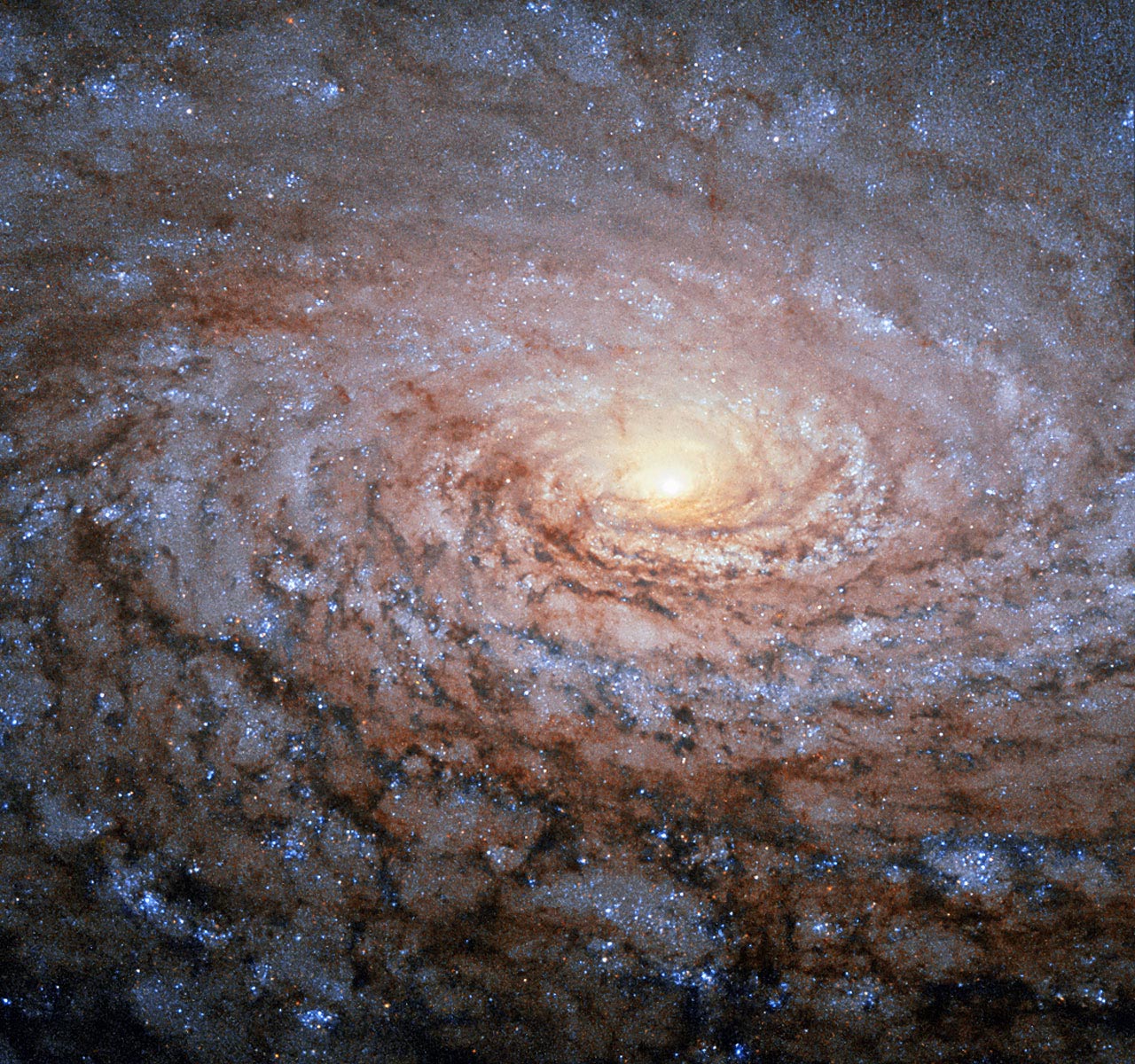

The best example is the sunflower galaxy (Messier 63 / NGC 5055) with the strongest external field among SPARC galaxies, whose well-measured rotation curve exhibits a slightly declining behavior at a great radial distance and can only be accurately modeled with an external field effect. Credit: ESA / Hubble and NASA
A team of international collaborators detects ‘external field effect’, a prediction unique to MOND, rival dark matter hypothesis.
An international group of scientists, including Case Western Reserve University Astronomy Chair Stacy McGaugh, has published research claiming that a rival idea to the popular dark matter hypothesis more accurately predicts a galactic phenomenon that appears to defy the classical rules of gravity.
This is significant, say the astrophysicists, because it further establishes the hypothesis – called modified Newtonian dynamics (MOND) or “ modified gravity ” – as a viable explanation for a cosmological dilemma: that galaxies appear to be breaking the long-accepted rules of gravity. . traced to Sir Isaac Newton in the late 1600s.
The mystery: For decades, we’ve measured more gravity in space than we think we should – that there isn’t enough visible or known matter to explain all of this.
Thus, proponents of dark matter hypothesize that most of the known universe is actually made of material that doesn’t interact with light, making it invisible and undetectable, but that this material is responsible for much of the gravitational pull between galaxies. It has been the prevailing theory for nearly 50 years.
The MOND theory, a counter-explanation introduced in the early 1980s by physicist Mordehai Milgrom of the Weizmann Institute (Israel), says that this gravity exists because the rules of gravity have changed slightly.
Rather than attributing the excess gravity to an invisible, undetectable dark matter, MOND suggests that gravity is stronger at low accelerations than would be predicted by a pure Newtonian concept.
In addition, MOND made a bold prediction: the internal movements of an object in the cosmos must depend not only on the mass of the object itself, but also on the pull of all other masses in the universe – the so-called ‘external field effect’. (EFE).
Milgrom said the findings, if firmly confirmed, “would be the smoking gun that proves galaxies are controlled by modified dynamics rather than obeying Newton’s laws and general relativity.”
150 galaxies tested for EFE
McGaugh and his associates, led by Kyu-Hyun Chae, of Sejong University in South Korea, say they have detected this EFE in more than 150 galaxies studied.
Their findings were recently published in The Astrophysical Journal.
“The external field effect is a unique signature of MOND that does not occur in Newton-Einstein gravity,” said McGaugh. “In conventional theory, this has no analogy with dark matter. Detection of this effect is a real head scraper. “
The team of six astrophysicists and astronomers includes lead author Chae and other collaborators from the United Kingdom, Italy and the United States.
“I’ve been working with the hypothesis that dark matter exists, so this result really surprised me,” said Chae. “At first I was reluctant to interpret our own results in favor of MOND. But now I can’t deny that the results in their current form clearly support MOND rather than the dark matter hypothesis. “
Analysis of rotating galaxies
The group analyzed 153 rotational curves of disk galaxies as part of their study. The galaxies were selected from the Spitzer Photometry and Accurate Rotation Curves (SPARC) database created by another contributor, Federico Lelli, during his postgraduate studies at Case Western Reserve, McGaugh and co-author James Schombert of the University of Oregon.
In addition to Chae, McGaugh, Lelli and Schombert, the authors of the study were Pengfei Li of Case Western Reserve and Harry Desmond of the University of Oxford.
The scientists said they derived the EFE by observing that galaxies in strong external fields slowed down (or showed diminishing rotational curves) more often than galaxies in weaker external fields – as predicted only by MOND.
Lelli said he was initially skeptical of the results “because the external field effect on rotational curves is expected to be very small. We have checked various systems for months. In the end, it became clear that we had real, solid detection. “
McGaugh said skepticism is part of the scientific process and understands the reluctance of many scientists to view MOND as a possibility.
“I came from the same place as those in the dark matter community,” he said. ‘It hurts to think we’re so wrong. But Milgrom predicted this with MOND more than 30 years ago. No other theory anticipated the observed behavior. “
Reference: “Testing the Strong Equivalence Principle: Detection of the External Field Effect in Rotational Supported Galaxies” by Kyu-Hyun Chae, Federico Lelli, Harry Desmond, Stacy S. McGaugh, Pengfei Li and James M. Schombert, November 20, 2020, The Astrophysical Journal.
DOI: 10.3847 / 1538-4357 / abbb96
Case Western Reserve University is one of the country’s leading private research institutions. Based in Cleveland, we offer a unique combination of progressive educational opportunities in an inspiring cultural environment. Our leading faculty is engaged in teaching and research in a collaborative, hands-on environment. Our nationally recognized programs include arts and sciences, dentistry, engineering, law, management, medicine, nursing and social work. About 5,100 undergraduate and 6,200 graduate students make up our student organization. Visit case.edu to learn how Case Western Reserve thinks beyond the possible.